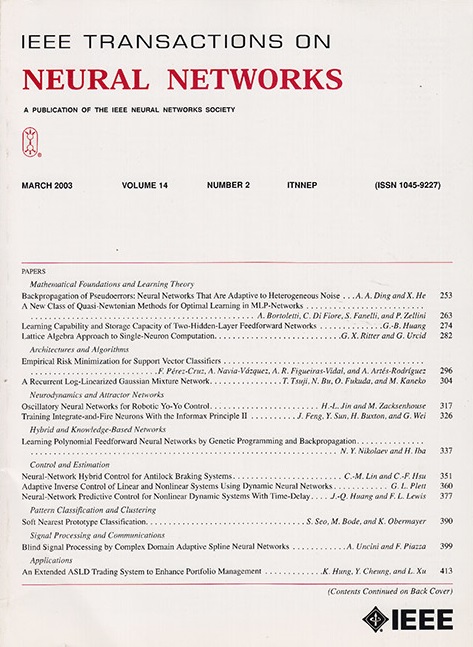Learning Cross-Attention Discriminators via Alternating Time–Space Transformers for Visual Tracking
IF 8.9
1区 计算机科学
Q1 COMPUTER SCIENCE, ARTIFICIAL INTELLIGENCE
IEEE transactions on neural networks and learning systems
Pub Date : 2023-06-20
DOI:10.1109/TNNLS.2023.3282905
引用次数: 0
Abstract
In the past few years, visual tracking methods with convolution neural networks (CNNs) have gained great popularity and success. However, the convolution operation of CNNs struggles to relate spatially distant information, which limits the discriminative power of trackers. Very recently, several Transformer-assisted tracking approaches have emerged to alleviate the above issue by combining CNNs with Transformers to enhance the feature representation. In contrast to the methods mentioned above, this article explores a pure Transformer-based model with a novel semi-Siamese architecture. Both the time–space self-attention module used to construct the feature extraction backbone and the cross-attention discriminator used to estimate the response map solely leverage attention without convolution. Inspired by the recent vision transformers (ViTs), we propose the multistage alternating time–space Transformers (ATSTs) to learn robust feature representation. Specifically, temporal and spatial tokens at each stage are alternately extracted and encoded by separate Transformers. Subsequently, a cross-attention discriminator is proposed to directly generate response maps of the search region without additional prediction heads or correlation filters. Experimental results show that our ATST-based model attains favorable results against state-of-the-art convolutional trackers. Moreover, it shows comparable performance with recent “CNN + Transformer” trackers on various benchmarks while our ATST requires significantly less training data.通过交替时空变换器学习用于视觉跟踪的交叉注意力判别器
在过去几年中,利用卷积神经网络(CNN)进行视觉跟踪的方法大受欢迎,并取得了巨大成功。然而,卷积神经网络的卷积操作难以将空间上的远距离信息联系起来,这限制了跟踪器的分辨能力。最近,出现了几种变换器辅助跟踪方法,通过将 CNN 与变换器相结合来增强特征表示,从而缓解了上述问题。与上述方法不同的是,本文探索的是一种基于 Transformer 的纯模型,采用新颖的半暹罗架构。用于构建特征提取骨干的时空自注意力模块和用于估算响应图的交叉注意力判别器都只利用注意力而不进行卷积。受最新视觉转换器(ViTs)的启发,我们提出了多级交替时空转换器(ATSTs)来学习稳健的特征表征。具体来说,每个阶段的时间和空间标记由不同的变换器交替提取和编码。随后,我们提出了一种交叉注意力判别器,可直接生成搜索区域的响应图,而无需额外的预测头或相关滤波器。实验结果表明,与最先进的卷积跟踪器相比,我们基于 ATST 的模型取得了良好的效果。此外,它在各种基准测试中的表现与最新的 "CNN + Transformer "跟踪器不相上下,而我们的 ATST 所需的训练数据要少得多。
本文章由计算机程序翻译,如有差异,请以英文原文为准。
求助全文
约1分钟内获得全文
求助全文
来源期刊

IEEE transactions on neural networks and learning systems
COMPUTER SCIENCE, ARTIFICIAL INTELLIGENCE-COMPUTER SCIENCE, HARDWARE & ARCHITECTURE
CiteScore
23.80
自引率
9.60%
发文量
2102
审稿时长
3-8 weeks
期刊介绍:
The focus of IEEE Transactions on Neural Networks and Learning Systems is to present scholarly articles discussing the theory, design, and applications of neural networks as well as other learning systems. The journal primarily highlights technical and scientific research in this domain.
 求助内容:
求助内容: 应助结果提醒方式:
应助结果提醒方式:


